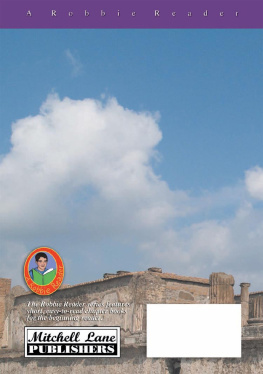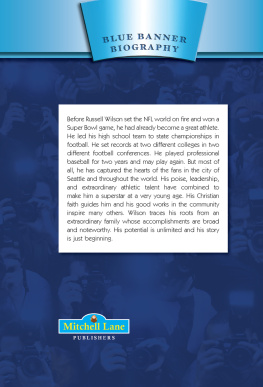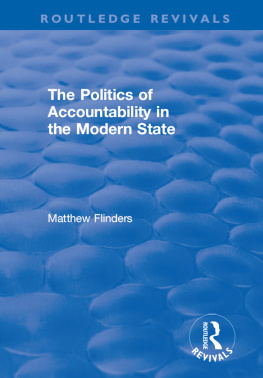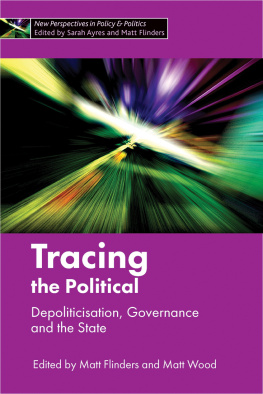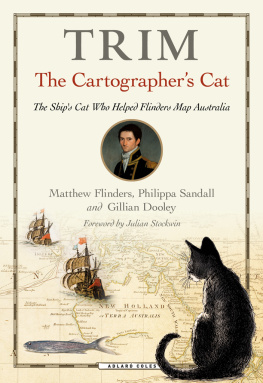FLINDERS LANE
FOREWORD
THE MAN WHO KNEW ALFRED FELTON
More than a century after his death, nothing would have given Alfred Felton more gentle pleasure than to have seen the remarkable development of the Alfred Felton Bequests, but he may have had mixed feelings about being called Australias first great philanthropist.
Born in England, Felton arrived in Melbourne on 1 November 1853 as a 22 year old amidst accelerating excitement after the discovery of gold in July 1851. Ten years later, on 11 February 1863, another English 22-year-old immigrant, Frederick Grimwade, arrived in Melbourne. He had been trained as a pharmacist.
On 11 July 1867, Felton and Grimwade formed a business partnership that endured for four decades until Feltons death. It was an amicable business that expanded from pharmaceuticals to chemicals and the manufacture of glass, and later to industrial gases. It made Felton a rich man.
Being a bachelor, Felton often joined the Grimwade family for Sunday lunch at their home, Harleston, in Melbournes then semi-rural suburb of Caulfield. It was here that Russell Grimwade was born on 15 October 1879. Young Russell was accustomed to Felton being a constant part of the Grimwade family, and after graduating in science, he joined Felton Grimwade & Co. and worked with Felton. Their lives overlapped for 25 years.
Alfred Felton lived a quiet life, largely unnoticed by the public until his death on 8 January 1904; thereafter his wealth and his bequests became highly visible. Half of the annual income was to be distributed to charities in Victoria and the other half was to acquire works of art for the National Gallery of Victoria, these now valued at over $2 billion. The income distributions were to be managed by a committee of five, The Felton Bequests Committee, with a dynastic succession of Grimwades specified by Felton as future members. Russell was a committee member for three separate periods from 1929 and its chairman from 1952 to 1955. As Russells great nephew, I joined the Committee in 1973.
Russell had an astonishing range of interests and his renaissance mind cast an impressive shadow. Even though he was the youngest of four brothers, he was undoubtedly the best Grimwade to write about Felton from first-hand knowledge and from his working association with the Felton Bequest. In 1947, the story of Feltons personal life, Flinders Lane: Recollections of Alfred Felton, was published by Melbourne University Press.
After the deaths of Sir Russell and Lady (Mab) Grimwade, The Miegunyah Fund was established at the University of Melbourne by bequests under their wills. Miegunyah was their home from 1911 to 1955. As their last surviving trustee, I was designated to be the Life Member of The Miegunyah Fund; one of its main beneficiaries is The Miegunyah Press, established as an imprint of Melbourne University Press, now Melbourne University Publishing.
By 2017, 70 years had passed since the publication of Flinders Lane. Appropriately, the National Gallery of Victorias Great Hall now exhorts visitors to Honour Alfred Felton: whose bequest has transformed our collection. The time had also come for the Felton Bequest to reprint Flinders Lane as a tribute to the legacy of Alfred Felton and to Russell Grimwade, the man who knew Alfred Felton. This time, it is fittingly published under the imprint of The Miegunyah Press.
ANDREW GRIMWADE
31 December 2017
The Baptismal Register of the Congregational Church, Maldon, Essex
FLINDERS LANE
Recollections of Alfred Felton
By
RUSSELL GRIMWADE
Wood Engravings
by
Helen Ogilvie
MELBOURNE UNIVERSITY PRESS
THE MIEGUNYAH PRESS
An imprint of Melbourne University Publishing Limited
Level 1, 715 Swanston St, Carlton, Victoria 3053, Australia
www.mup.com.au
First published 1947
Text Russell Grimwade, 1947
Foreword Andrew Grimwade, 2018
Design and typography Melbourne University Publishing Limited, 1947, 2018
This book is copyright. Apart from any use permitted under the Copyright Act 1968 and subsequent amendments, no part may be reproduced, stored in a retrieval system or transmitted by any means or process whatsoever without the prior written permission of the publishers.
Every attempt has been made to locate the copyright holders for material quoted in this book. Any person or organisation that may have been overlooked or misattributed may contact the publisher.
Printed in Australia by McPhersons Printing Group
9780522873917 (hardback)
9780522873924 (ebook)
PREFACE
In the belief that the future people of my country will want to know something of the story of the man whose name appears on so many pictures in the Melbourne Gallery, and whose benevolence has succoured so many of his compatriots, I have endeavoured to set out in this tale a description of his life and personality.
I have tried to make a picture of his surroundings before time will destroy all personal memories with his life. Already do the circumstances of an ordinary life in the closing years of last century seem to belong to another period. Men of importance in affairs today are already those children who were born to a world of motor cars, telephones and electric light, and although it cannot be said that Alfred Felton knew none of these things, he had passed through this world before they became universal and wrought that change in our domestic and social existence that only the elder men of today can realise.
The Felton Bequest will outlive any one mans life and its cultural and charitable influence through the new world of the south presumably will continue and grow for many years to come.
The original managers of the trust, as nominated by Mr. Felton, have long since passedto what good effect they laboured may be gathered from a study of the increased volume of the funds distributed by the estate. The mechanism of its working remains in the able but impersonal hands of the company selected by the founder to shoulder this responsibility.
The initial period of doubt and uncertainty marked by self-seeking interests is passingif it has not already passedand a period of pride in the munificence and true philanthropy (literally, the love of mankind) of a fellow countryman has already set in. With it will come a feeling of national honour to those who, in any sense, however small, have to help administer this great bequest.
It is the authors self-assumed task to let Australians know what manner of man their benefactor was, and what were the motives behind this act of benevolence. That means telling the story of Mr. Feltons life as I observed it.
This story cannot be told without introducing members of my own family as my father and he had been partners in the foundation of their main business for thirty-seven years when the latter died. To omit mention of my father and mother would limit the possibilities of passing on the facts on which to form a proper impression of his personality, and also would be unjust to the character of my parents. It was a true partnership. Mr. Felton provided the means that enabled the hard work and good sense of my father to establish a good business. My mother was the only contemporary of Mr. Feltons whom I ever heard him address by Christian name.






